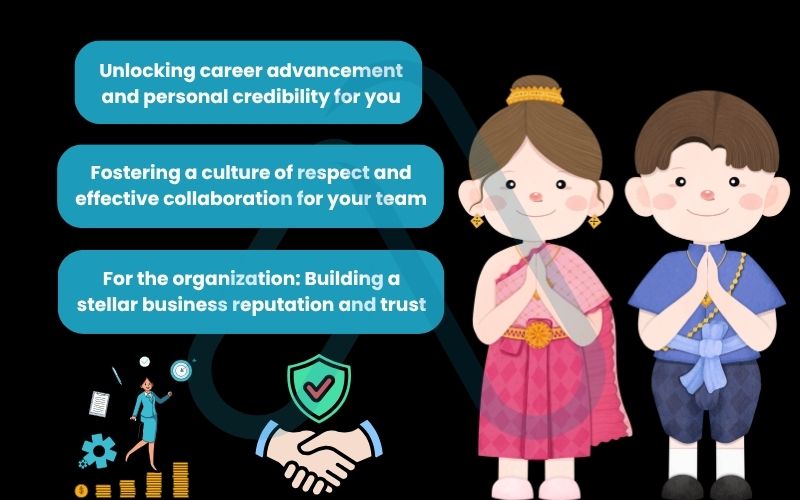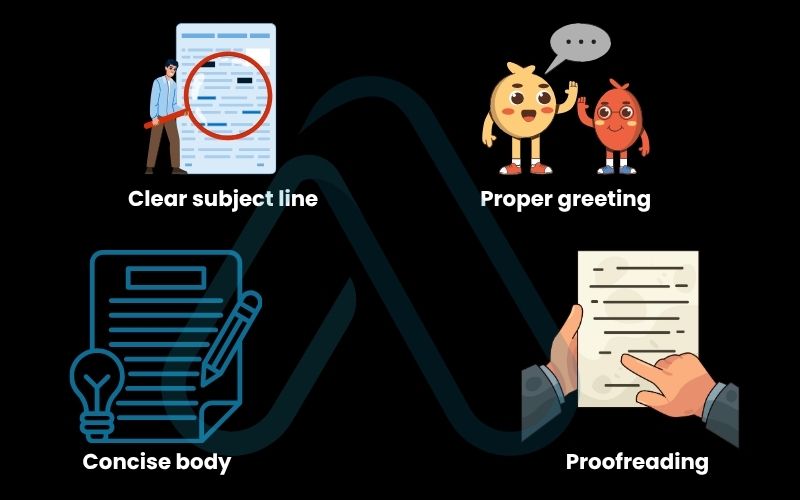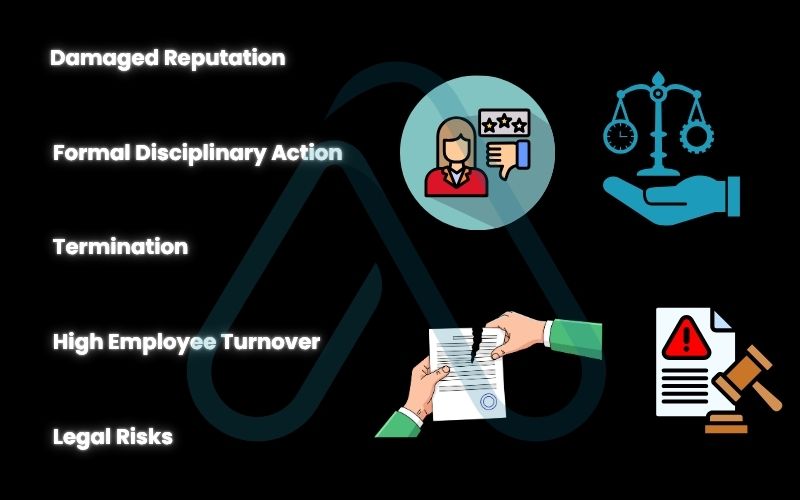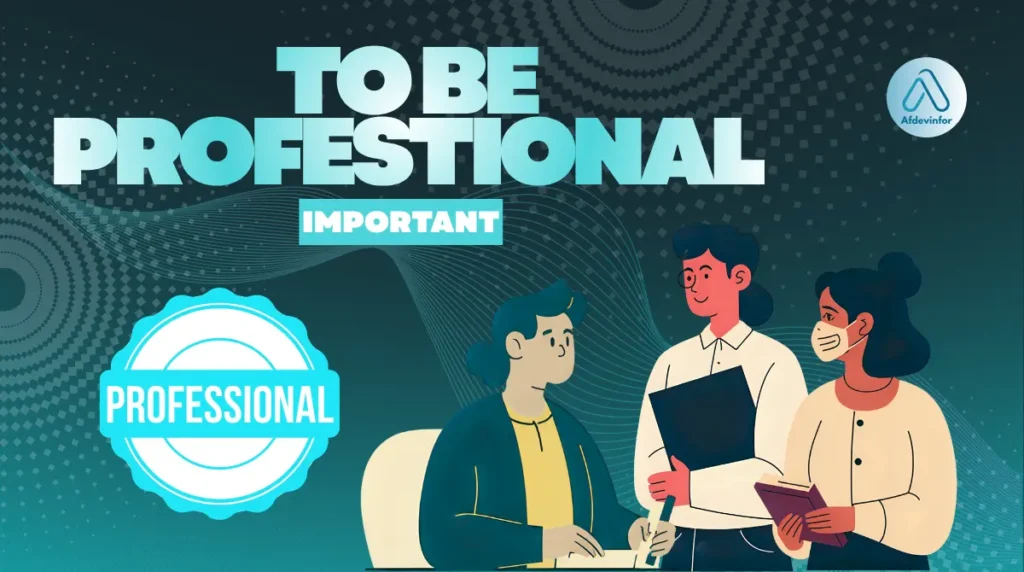Over my 10 years in the tech world, I’ve seen countless people ask why is it important to be professional, and the answer is rarely about wearing a suit or never disagreeing. The old, stuffy notions of professionalism just don’t fit our modern, remote, and diverse workplaces anymore. I’m here to argue it’s much more and much more valuable than that.
It’s a dynamic skill set that allows us to collaborate effectively, earn respect, and build a career we’re proud of. At its core, professionalism is about how we add value and build trust with the people around us.True professionalism isn’t about conforming; it’s about creating trust, respect, and effectiveness in any environment.
1. How professionalism fuels your career and workplace
Before we dive into the nuances of modern professionalism, it’s crucial to understand its foundational benefits. I’ve seen firsthand how professional behavior creates a positive ripple effect, benefiting you, your team, and the entire organization.
1.1. Unlocking career advancement and personal credibility for you
Ultimately, your career growth depends on the trust you build with managers and leadership. Professional behavior is the currency of that trust. Think about it from a manager’s perspective. I once had to choose between two developers for a major project lead. Alex was a coding genius but consistently missed deadlines and communicated poorly.
Ben was a solid coder, but his real strength was his professionalism. He was reliable, took feedback gracefully, and was an excellent communicator. I chose Ben. Why? Because I could trust him to represent the team well and see the project through without causing friction. That’s how professionalism affects career growth directly. Here is the clear cause-and-effect path I’ve observed:
- Consistent professional behavior leads to…
- Increased trust and reliability, which results in…
- More responsibility and opportunities for career advancement.
1.2. Fostering a culture of respect and effective collaboration for your team
A professional environment is one where people feel safe to share ideas and resolve conflicts constructively. When team members communicate with respect, a minor disagreement over a project detail doesn’t escalate into a major personal conflict. This concept, known as psychological safety, is the bedrock of high-performing teams. It fosters a workplace culture where innovation thrives because people aren’t afraid to take calculated risks. I’ve created a simple table to show the night-and-day difference I’ve witnessed between teams:
| Metric | Unprofessional Team | Professional Team |
|---|---|---|
| Meeting Effectiveness | Meetings are often derailed by side conversations, personal attacks, or a lack of preparation. | Meetings are focused, agendas are followed, and discussions are respectful and productive. |
| Feedback Culture | Feedback is either avoided or delivered poorly, causing defensiveness and resentment. | Constructive feedback is shared openly and received gracefully, leading to growth. |
| Conflict Resolution at Work | Disagreements become personal and toxic, hindering progress and damaging morale. | Conflicts are addressed directly and respectfully, focusing on solutions, not blame. |
1.3. For the organization: Building a stellar business reputation and trust
An organization’s reputation is the sum of its employees’ actions. Every interaction an employee has with a customer, partner, or the public shapes the company’s brand image. I remember seeing a social media storm erupt after a support agent from a well-known company posted a rude reply to a customer. The damage to their business reputation was immediate and severe.
Conversely, companies known for their professional and helpful customer service build immense loyalty. Professional employee conduct also mitigates legal and HR risks, creating a stable and secure environment.
Fact: Studies consistently show that over 80% of consumers will stop doing business with a company after just one negative customer service experience, highlighting the direct financial impact of professionalism.

2. Redefining professionalism for the modern world
The workplace has changed dramatically, and so has our understanding of professionalism. Technology, globalization, and a greater emphasis on diversity and inclusion mean that the one-size-fits-all model of the past is no longer relevant or effective. This is where we need to adapt our perspective.
2.1. The challenge with tradition: How old standards can create bias
For decades, the template for ‘professionalism’ was based on Western, male-dominated corporate norms. This has unintentionally created standards that can be exclusionary. When a company’s dress code, for instance, has strict rules against natural hairstyles like braids or afros, it sends a clear message that certain cultural identities are not welcome.
This is not just unfair; it’s bad for business. To build an inclusive workplace culture, organizations must actively question these outdated rules. My advice for modernizing employee conduct is to focus on impact and respect, not conformity. Here are some red flags to watch for in professional codes:
- Overly specific dress codes that don’t relate to job function or safety.
- Policing of natural hair or cultural attire.
- Penalizing communication styles that are different but still clear and respectful.
- Expecting employees to suppress all aspects of their personality.
2.2. Why is it important to be professional in remote settings?
In a remote or hybrid environment, professionalism is more crucial than ever because we lack the non-verbal cues of in-person interaction. A hastily written Slack message can be easily misinterpreted as rude, and digital silence can be mistaken for disengagement. Maintaining remote work professionalism is about being intentional with our communication to build the trust that would normally be forged in an office. It requires a new level of digital etiquette. I’ve put together a quick guide to help navigate this new frontier:
| Area | Do | Don’t |
| Video Calls | Position your camera at eye level, use a work-appropriate background, and mute your mic when not speaking. | Multitask visibly, eat on camera, or have a distracting background that shows a lack of respect for others’ time. |
| Written Communication | Be clear, concise, and use appropriate tone. Reread messages before sending to check for ambiguity. | Use excessive jargon, all caps, or send rapid-fire, incomplete messages that disrupt others’ focus. |
| Digital Boundaries | Respect work hours and response time expectations. Use status updates (e.g., ‘in a meeting’) effectively. | Expect immediate replies outside of working hours or message colleagues on multiple platforms for the same issue. |
2.3. What professionalism looks like across different industries
To show how professionalism adapts, I’ve gathered perspectives from different fields. The core principles of respect and reliability are constant, but their expression changes based on the culture and context. Here are three examples:
In finance, professionalism is about meticulous attention to detail and unwavering client confidentiality. Our dress code is formal because it projects an image of stability and trustworthiness, which is critical when you’re managing billions of dollars.
David, Investment Banking
Key Takeaway: In high-stakes, traditional industries, professionalism is often expressed through formal appearance and strict adherence to protocols.
For us, professionalism means radical collaboration and fearless feedback. We can wear jeans and t-shirts, but you must be able to defend your creative choices passionately and accept critique without taking it personally. It’s about respecting the creative process.
Maria, Creative Agency
Key Takeaway: In creative fields, professionalism is demonstrated through collaborative spirit and the ability to separate ideas from identity.
At my startup, professionalism is about ownership and speed. It means taking initiative, admitting quickly when you’ve failed, and learning from it publicly so the whole team gets better. There’s no time for ego; it’s all about moving the product forward.
Sam, Tech Startup
Key Takeaway: In fast-paced tech environments, professionalism is tied to accountability, transparency, and a relentless focus on collective goals.
3. How to demonstrate professionalism
Now that we’ve explored the why and what, let’s focus on the how. These are not inherent traits but skills you can actively develop. Think of this as your practical guide to building a strong professional reputation from day one.
3.1. Communication and etiquette
Clear, respectful communication is the foundation of professionalism. It’s about making interactions easy and effective for everyone involved. To help you demonstrate professionalism with coworkers, I’ve put together a checklist for one of the most common forms of communication: email.
- Clear subject line: Summarize the email’s purpose (e.g., ‘Question about Q3 Project Timeline’).
- Proper greeting: Use a respectful salutation (e.g., ‘Hi Sarah,’ or ‘Hello Team,’).
- Concise body: Get to the point quickly and clearly. Use paragraphs and bullet points to improve readability.
- Proofreading: Always check for typos and grammatical errors before hitting send.
This extends to verbal feedback as well. For example, instead of saying: ‘Your idea won’t work,’ try: ‘That’s an interesting starting point. Have we considered how we would handle the X challenge with that approach?’ The first is a dead end; the second opens a collaborative discussion.

3.2. Reliability and accountability
Being reliable means people can count on you. It’s about meeting deadlines, being punctual for meetings, and doing what you say you’ll do. But nobody is perfect. Accountability is what you do when things go wrong. Taking ownership of a mistake builds more trust than trying to hide it. If you know you’re going to miss a deadline, don’t wait. Use this simple 3-step accountability framework:
- Inform stakeholders early: As soon as you anticipate a delay, communicate it to everyone who will be affected.
- Explain the impact and your plan to mitigate it: Briefly explain the situation and what you’re doing to get back on track.
- Set a new, realistic deadline: Provide a new timeline that you are confident you can meet.
3.3. Composure and conflict resolution
The workplace can be a high-pressure environment. Maintaining composure, staying calm and thinking clearly, is a hallmark of professionalism. It allows you to navigate disagreements and stressful situations without making them worse. When faced with conflict, focus on de-escalation. I’ve found a simple script can be incredibly effective in shifting the dynamic.
Try saying something like: ‘I understand you’re frustrated. Let’s focus on the problem, not the people, to find a solution.’ This technique of conflict resolution at work validates the other person’s feelings while redirecting the energy toward a productive outcome.
4. When ‘professionalism’ goes too far
Professionalism is a powerful tool, but like any tool, it can be misused. When organizations enforce rigid, outdated rules under the guise of ‘professionalism,’ they can inadvertently stifle the very things that drive success: creativity, authenticity, and innovation.
If employees are afraid to voice a dissenting opinion or share a wild idea for fear of appearing ‘unprofessional,’ the company loses out on valuable perspectives. This culture of conformity can lead to groupthink, employee burnout, and a workplace where people feel they can’t be their true selves.
For Leaders
Are your professional standards encouraging conformity or fostering innovation? Re-evaluating your expectations is key to building a healthy, dynamic team.
5. How professional are you?
Let’s do a quick self-check to see where your strengths are and identify potential areas for growth. This isn’t a test but a tool for self-reflection. For each question below, answer with ‘Often,’ ‘Sometimes,’ or ‘Rarely.’
- I meet my deadlines consistently.
- When I miss a deadline, I inform stakeholders in advance.
- I arrive at meetings prepared and on time.
- I actively listen without interrupting in conversations.
- I proofread my emails and messages for clarity and tone before sending.
- I offer constructive feedback rather than just criticism.
- I take ownership of my mistakes without blaming others.
- I remain calm and composed when faced with unexpected challenges.
- I respect my colleagues’ work hours and communication preferences.
- I keep my commitments and promises.
Results
If you answered ‘Often’ to most of these, you have a strong professional foundation! If you have a mix of ‘Sometimes’ and ‘Rarely,’ that’s completely normal. Pick one or two areas from this list and make a conscious effort to improve them over the next month. At Afdevinfo, we believe that professional growth is a journey, and self-awareness is the first step.
6. The consequences of unprofessional behavior
Understanding the stakes can reinforce the importance of professional conduct. The negative impacts of unprofessionalism are serious and can affect both individuals and the company as a whole. Here’s a straightforward breakdown of the potential consequences:
For the Employee
- Damaged Reputation: Your professional reputation is hard to build and easy to lose. Unprofessional conduct can lead to being labeled as unreliable or difficult to work with.
- Missed Opportunities: You may be passed over for promotions, important projects, or raises.
- Formal Disciplinary Action: This can range from a verbal warning to being placed on a performance improvement plan.
- Termination: In serious cases, unprofessional behavior can be grounds for dismissal.
For the Company
- Decreased Morale and Productivity: A toxic or unprofessional environment demotivates employees and hinders collaboration.
- High Employee Turnover: Good employees will leave a company where unprofessional behavior is tolerated.
- Damaged Brand Image: As mentioned earlier, customer-facing unprofessionalism can quickly harm a company’s public reputation.
- Legal Risks: Behavior that crosses the line into harassment or discrimination can lead to costly lawsuits.

7. FAQs about why is it important to be professional?
Here are a few common questions I get about navigating professionalism in the real world. Let’s tackle them with some practical advice.
Is it unprofessional to have tattoos or piercings at work?
It depends entirely on the industry and company culture; tech/creative fields are often accepting, while traditional fields may have stricter policies.
How can I address unprofessional behavior from a coworker?
Start with a direct, private conversation; if the behavior continues or is serious, escalate it to your manager or HR with specific, documented examples.
Can you be friends with your boss and still be professional?
Yes, but it requires clear boundaries from both parties to avoid favoritism and maintain the professional hierarchy.
8. Final thoughts
Throughout my career, I’ve learned that professionalism isn’t a rigid set of rules but a flexible, powerful skill set for navigating the human side of work. It’s about building trust, showing respect, and holding yourself accountable. As workplaces continue to evolve, our definition of professionalism must evolve with them, becoming more inclusive, adaptable, and authentic.
Here are the most critical takeaways from our discussion:
- Professionalism Drives Career Growth: It’s the foundation of trust and credibility that unlocks promotions and key projects.
- It’s an Evolving Concept: Modern professionalism must be inclusive and adaptable to remote work, diverse cultures, and changing industries.
- It’s a Learnable Skill: Through conscious effort in communication, reliability, and composure, you can build a strong professional reputation.
- Balance is Key: True professionalism fosters collaboration and innovation; it doesn’t stifle authenticity or creativity.
Your professional style is a unique part of your personal brand, cultivate it with intention and purpose.
Now that you have a framework for professional conduct, you’re better equipped to navigate your career path with confidence. For more guides on personal and professional development, I encourage you to explore our Career Development categories here on Afdevinfo.
Glossary of key terms
| Abbreviation | Full Term | Meaning |
| HR | Human Resources | The department within an organization responsible for managing the employee lifecycle, including recruitment, benefits, training, and workplace policies. |
| Psychological Safety | Psychological Safety | A shared belief within a team that members can take interpersonal risks, such as sharing new ideas or admitting mistakes, without fear of punishment or humiliation. |


